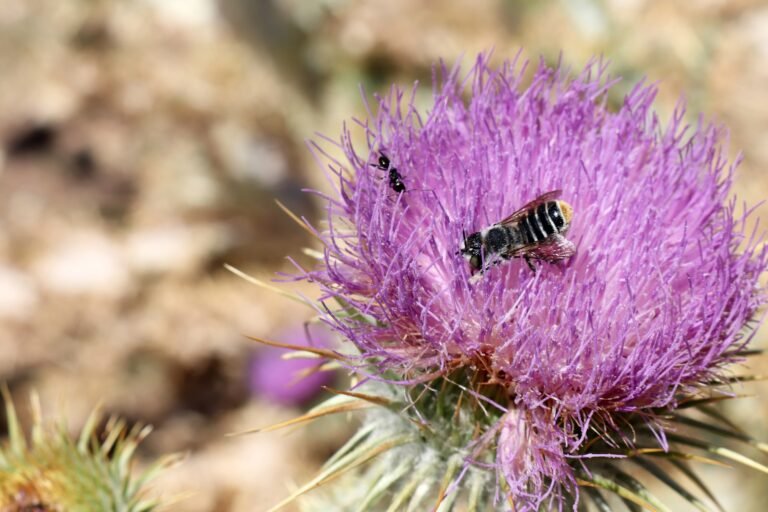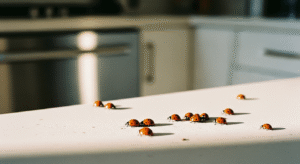Ants are known for their complex social structures and diverse interactions with other organisms. This article explores the unique symbiotic relationships ants share with insects such as aphids, beetles, butterflies, and termites, as well as the impact of climate change on these bonds. In numerous cases, communities have turned to ant-control measures and related services to manage infestations and preserve ecological balance. These relationships offer insights into ecosystem dynamics, biodiversity, and urban pest control, particularly relevant for homeowners and business owners in the Atlanta, GA metro area.
Discover the Fascinating Symbiotic Relationships of Ants
Symbiosis in entomology refers to long-lasting associations between species that live in mutual coexistence. In ants, most interactions are mutualistic, where both partners benefit. Ants use these bonds to secure food and protection, while also contributing to nutrient cycling and defense against predators. Research in microbial ecology and insectphylogenetics helps measure improvements in colony growth and survival, emphasizing the importance of these networks.
Understand the Definition of Symbiosis Among Insects
Symbiosis involves close interactions where at least one organism benefits. Ants form mutualistic relationships to secure food or shelter and contribute to defense against predators, highlighting the complex nature of ecological networks.
Explore Various Types of Symbiotic Relationships in Nature
Symbiotic relationships include: – Mutualism, where both species gain benefits. – Commensalism, where one benefits without affecting the other. – Parasitism, where one exploits the host. In ants, mutualistic bonds are most common and influence behavior, location, and even gene expression.
Identify the Benefits of Symbiosis for Ants and Other Insects
Symbiosis provides increased access to resources, enhanced protection, and better survival rates. For ants, these bonds offer food, shelter, and defense. In return, partners such as aphids gain protection and improved mobility, underscoring the mutual benefits that stabilize ecosystems.
Examine Real-Life Examples of Symbiotic Insect Interactions
A well-known example is the ant–aphid relationship, where ants protect aphids in exchange for honeydew. Similarly, beetles may inhabit ant nests to feed on secretions while aiding in nest hygiene. These partnerships support colony health and urban pest management.
Learn How These Relationships Affect Biodiversity
Such relationships promote biodiversity by stabilizing mutualistic networks, which improve soil quality, plant development, and pest control. Research shows that diverse insect populations contribute to increased ecosystem resilience.
Investigate the Role of Mutualism in Ecosystem Stability
Mutualism is key to ecosystem stability. Ants, by engaging in mutualistic interactions, help with nutrient cycling, plant defense, and pest regulation. Colonies involved in mutualism often demonstrate higher survival during stress and contribute to organic matter recycling.
Investigate Specifically How Ants Collaborate With Aphids
The ant–aphid partnership is one of the most studied mutualistic relationships. This collaboration offers insights into the mechanisms of mutualism.
Learn What Role Aphids Play in the Ant-Aphid Relationship
Aphids produce honeydew, a sugary secretion that attracts ants. In exchange, ants protect aphids from predators and parasites, significantly reducing predation and ensuring a steady food supply.
Understand How Ants Protect Aphids From Predators
Ants deter predators like ladybugs and parasitic wasps using chemical cues and rapid movements. This protection enables aphids to produce honeydew continuously while reinforcing the reward system for ants.
Find Out How Ants Harvest Honeydew From Aphids
Ants gently stroke aphids with their antennae to stimulate honeydew release—a process known as trophallaxis—which ensures a constant food supply for the colony.
Examine the Lifecycle Traits of Aphids That Attract Ants
Aphids reproduce rapidly and continuously produce honeydew, traits that attract ant attendance and boost colonynutrition.
Identify the Impact of This Partnership on Plant Health
While the ant–aphid bond may increase aphid populations that consume plant sap, the protective behavior of ants can deter more harmful pests, often resulting in a net benefit for plant health.
Analyze How Environmental Changes Affect Ant-Aphid Dynamics
Climate change and habitat alterations affect temperatures and precipitation, which can accelerate aphid reproduction and alter the balance of these mutualistic relationships.
Examine Ants and Their Partnerships With Beetles
Ants also form partnerships with various beetle species, enhancing colony survival and productivity.
Discover Types of Beetles That Form Partnerships With Ants
Beetles such as rove and scarab beetles often live within ant nests, feeding on waste and mimicking ant chemical signals to integrate smoothly into the colony.
Understand the Mutual Benefits Between Ants and Beetle Species
Ants benefit from the cleaning and defense provided by beetles, while beetles obtain a stable environment and resources, contributing to improved colony hygiene.
Explore Chemical Signals That Facilitate Communication
Pheromones and volatile compounds facilitate communication between ants and beetles. These chemical signals, which mimic ant hydrocarbons, ensure effective integration and mutual benefit.
Investigate the Role of Beetles as Guardians for Ant Colonies
Some beetles patrol ant nests and help defend against intruders and parasites, directly contributing to colony stability.
Learn About Specific Examples of Ant-Beetle Collaborations
Examples include rove beetles in leaf litter that participate in nest maintenance and defense, consistently observed across various regions as reliable partners.
Assess the Ecological Impact of These Insect Alliances
Ant-beetle alliances improve soil structure and decomposition rates, aiding nutrient cycling and supporting surrounding vegetation, which in turn boosts overall ecosystem health.
Analyze Ants’ Relationships With Other Insects Like Butterflies
Ants extend their mutualistic interactions to certain butterfly species, further enriching ecological networks.
Identify Butterfly Species That Engage in Mutualism With Ants
Lycaenidae butterflies, for instance, benefit from ant protection during their larval stages, where ants shelter the larvae in exchange for sugary secretions.
Understand How Ants Protect Butterfly Larvae in Exchange for Rewards
Ants guard butterfly larvae against predators using physical protection and chemical signals, while larvae provide food rewards, leading to improved survival and maturation rates.
Explore the Role of Chemical Cues in These Relationships
Specialized larval secretions contain sugars and amino acids that stimulate continuous ant attendance, ensuring the stability of this mutualistic bond.
Discover How These Interactions Benefit Biodiversity
Ant–butterfly interactions enhance pollination, genetic diversity, and food web stability, thereby supporting broader ecosystem health.
Examine Case Studies Showcasing Butterflies and Ants Together
Field studies have noted a significant increase in larval survival when ants are present, demonstrating the effectiveness of this mutualism in maintaining species populations.
Learn About the Ecological Roles These Pairings Fulfill
These pairings play roles in pollinator support, pest control, and regulation of insect populations, contributing to balanced and resilient ecosystems.
Uncover the Hidden Cooperation Between Ants and Termites
Some ants form unexpected cooperative relationships with termites, illustrating diverse symbiotic strategies.
Investigate Ant Species That Form Alliances With Termites
Certain ants integrate into termite mounds, using chemical mimicry to blend with termite colonies and exploit sheltered environments.
Understand the Benefits of This Symbiotic Interaction
Termites gain enhanced security against intruders, while ants benefit from a stable food source and microhabitats within the mound, aiding survival during environmental stress.
Explore How Ants Defend Termite Colonies From Threats
By patrolling the mound and intercepting predators, ants strengthen the termite colony’s defense, leading to improved colony longevity.
Analyze Food-Sharing Behaviors Between Ants and Termites
Through reciprocal nutrient exchanges, ants feed on secretions and remove waste, which boosts overall nutritional status and resource recycling efficiency.
Examine Ecological Consequences of This Unusual Partnership
These alliances enhance soil fertility and nutrient recycling, contributing to higher vegetation density and overall ecosystem productivity.
Identify Research Efforts Focused on Ants and Termite Relationships
Ongoing studies aim to quantify mutualism and decipher genetic and chemical markers, supporting more informed urban pest control strategies.
Explore the Impact of Climate Change on Ant Symbiosis
Climate change is reshaping ant symbioses by altering temperatures, humidity, and resource availability.
Learn How Climate Variations Affect Ant Partnerships
Rising temperatures and altered precipitation can accelerate ant metabolism and change the dynamics of mutualistic interactions through modified chemical cues.
Examine Species Adaptations to Changing Environmental Conditions
Ants adapt by altering foraging patterns, nest-building strategies, and interactions with partners to maintain mutual benefits under environmental pressures.
Understand How Altered Habitats Influence Insect Bonds
Reduced foliage and habitat changes may limit key resources like honeydew, potentially weakening established mutualisms.
Explore Potential Threats to Ant-Symbiotic Relationships
Increased pest infestations, habitat fragmentation, and invasive species due to climate change can disrupt these delicate interactions, highlighting the need for adaptive management.
Assess the Role of Conservation in Preserving Insect Alliances
Conservation efforts aimed at protecting natural habitats and promoting biodiversity are essential for sustaining these mutualistic interactions and urban ecosystem health.
Investigate Future Research Directions on Climate Impacts
Emerging research using remote sensing and environmental DNA analysis will help track these shifts and inform better pest management and conservation practices.
Strengthening Ecosystem Stability Through Ant Symbiosis
Ant symbiotic relationships form a sophisticated network that bolsters ecosystem stability and biodiversity. Through partnerships with aphids, beetles, butterflies, and even termites, ants demonstrate remarkable adaptability. The challenges posed by climate change further emphasize the importance of continuous research and adaptive management, offering valuable insights for urban pest control strategies in communities like Atlanta, GA.
Frequently Asked Questions
Q: What is symbiosisamong insects? A: It is a long-lasting association between species where at least one benefits, commonly seen as mutualism in ants and their insect partners.
Q: How do ants benefit from their partnership with aphids? A: Ants harvest honeydew from aphids while protecting them from predators, enhancing survival rates for both.
Q: What impact does climate changehave on ant symbiosis? A: Climate change alters temperature and humidity, which can affect chemical cues and disrupt established mutualistic interactions.
Q: Can ant-beetle partnerships improve colonyhealth? A: Yes, these partnerships aid in nest sanitation and defense, resulting in increased colony resilience.
Q: How do conservation efforts help preserve ant symbiotic relationships? A: Conservation protects natural habitats and maintains biodiversity—key factors for sustaining the complex mutualistic interactions that benefit ecosystems.




